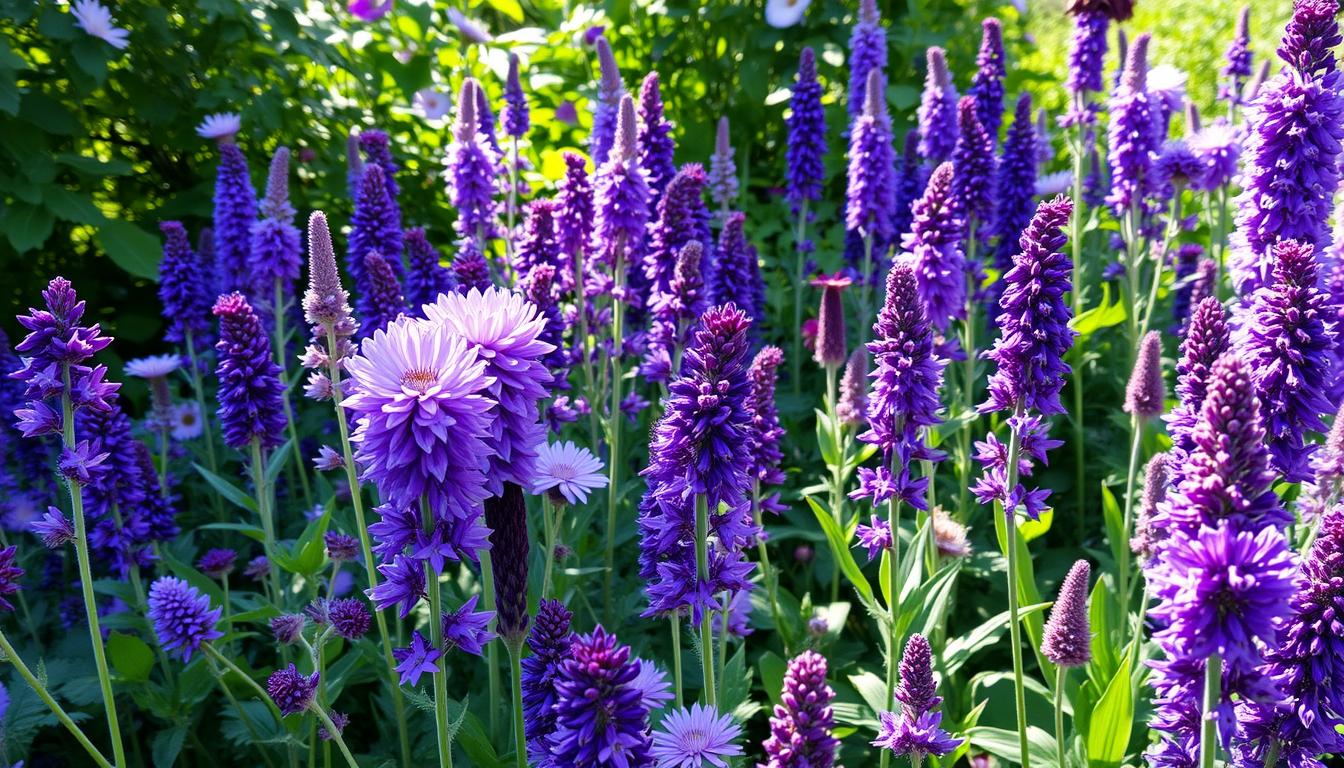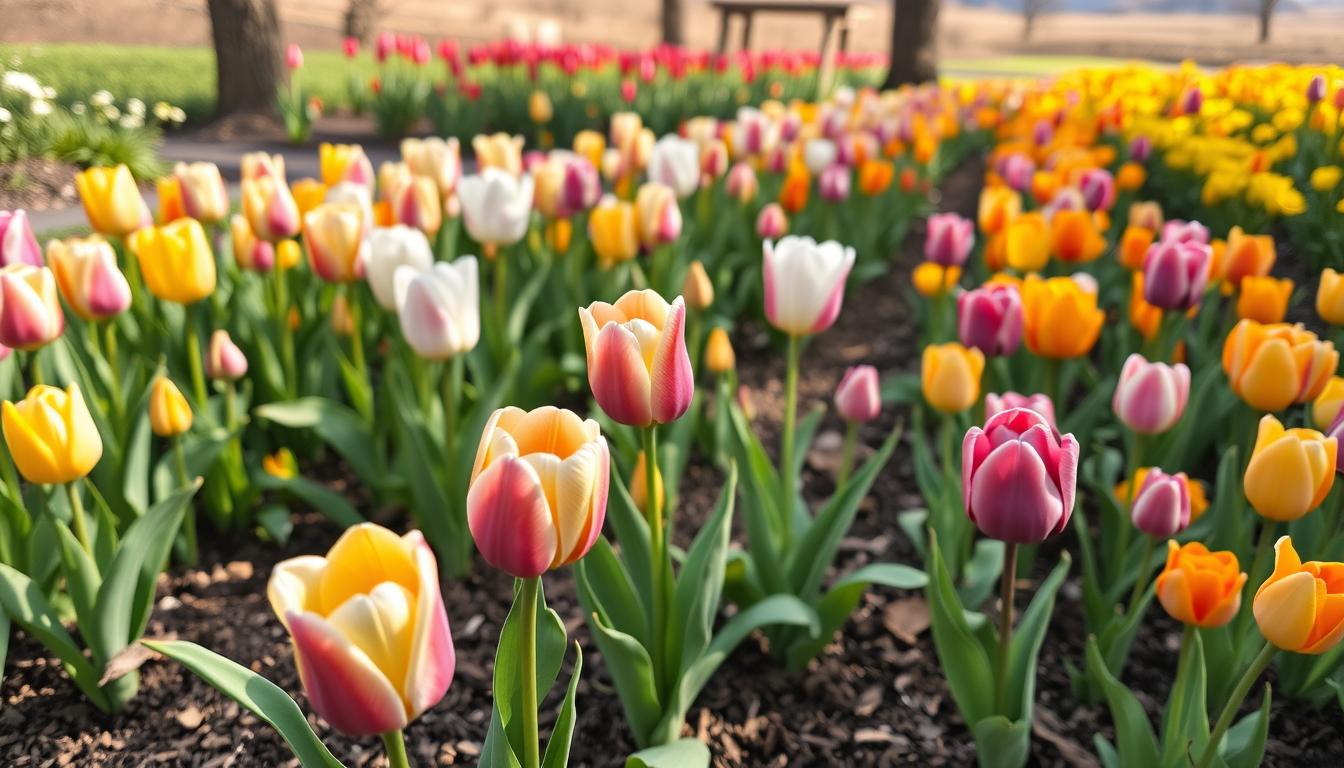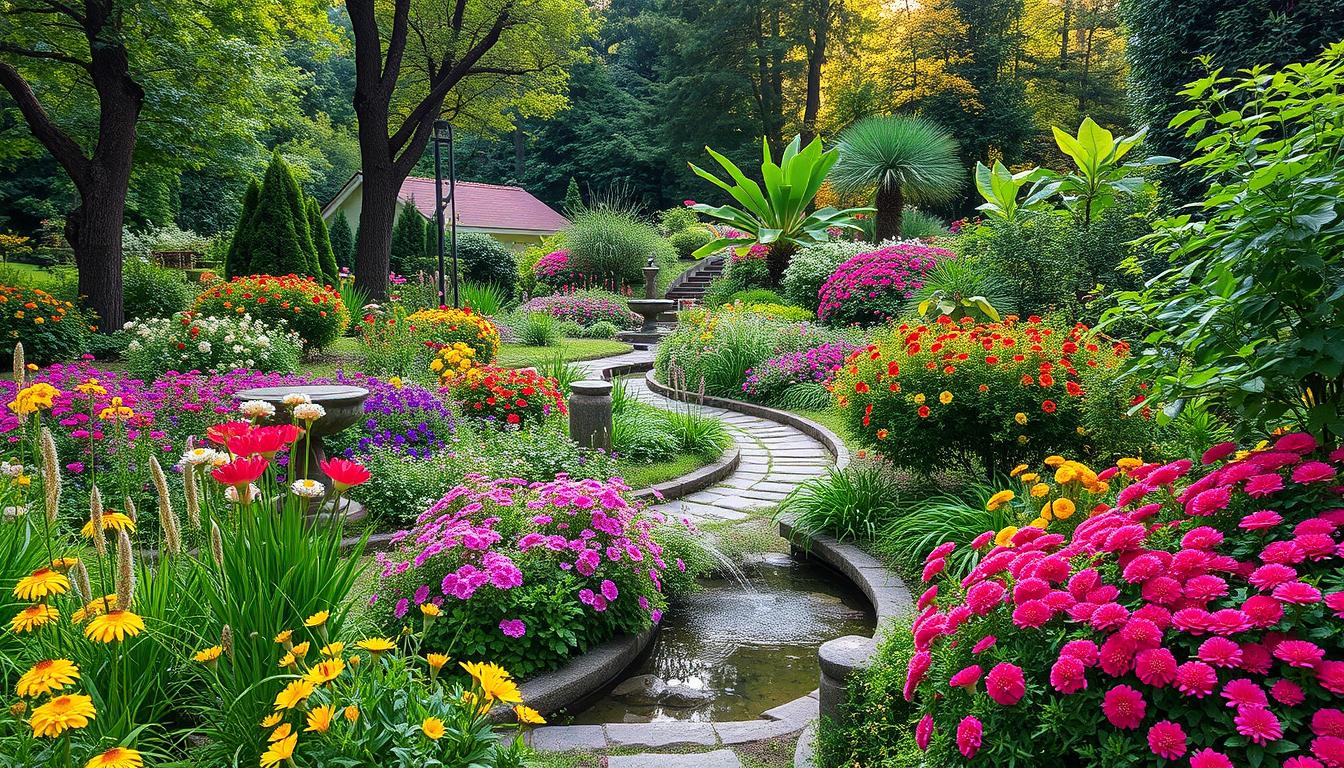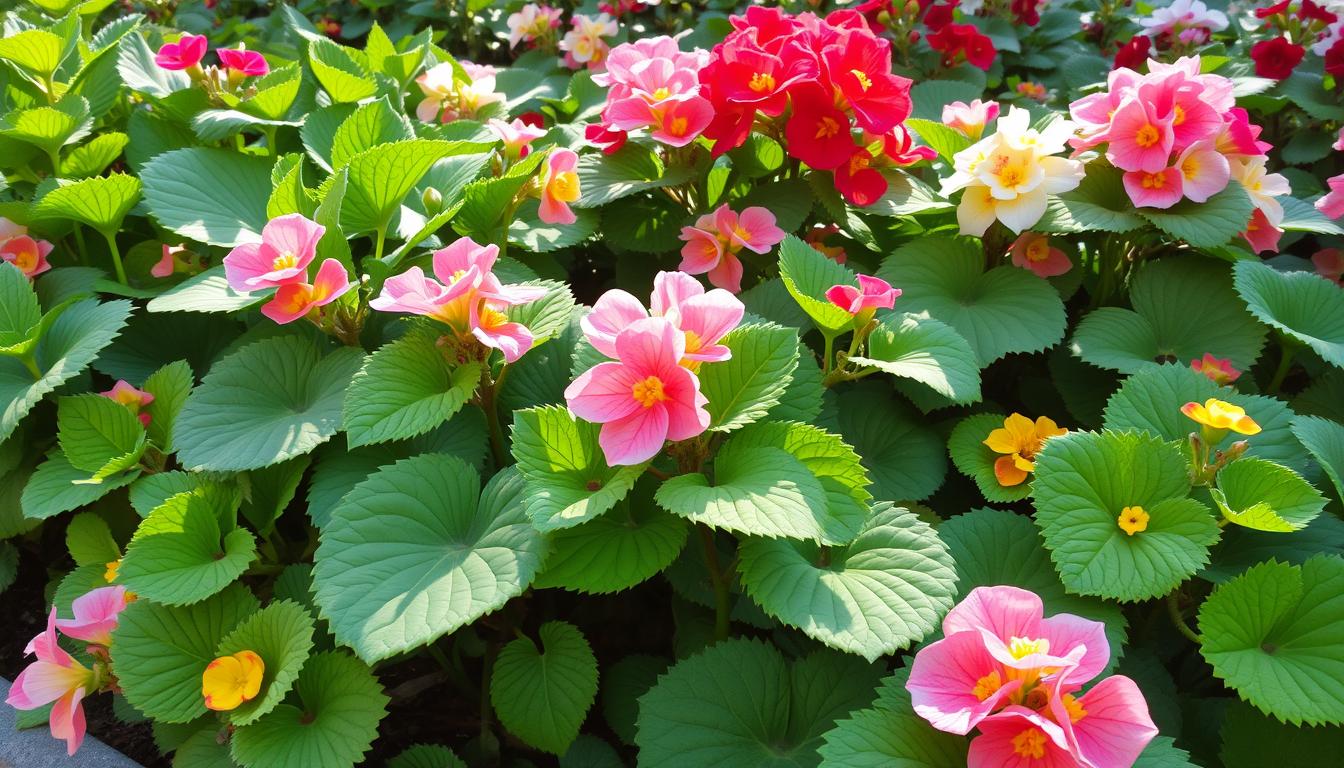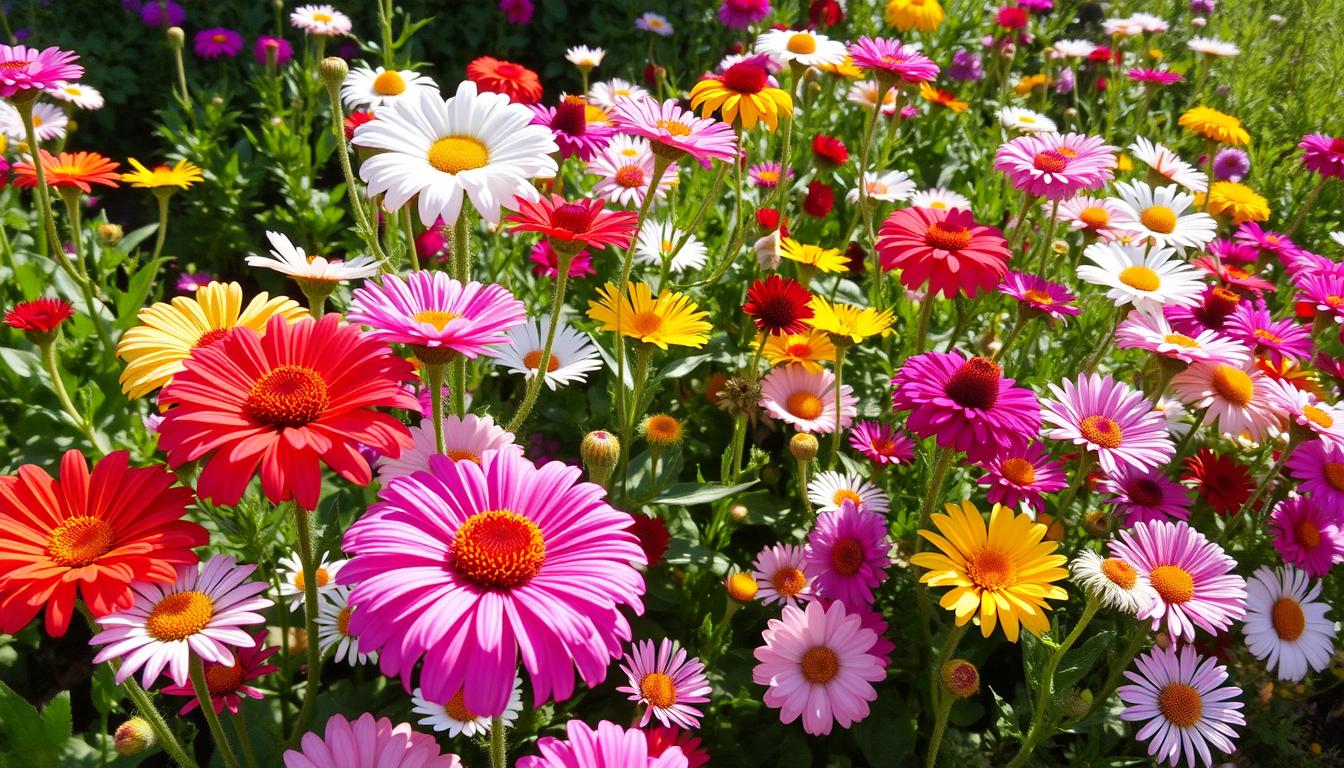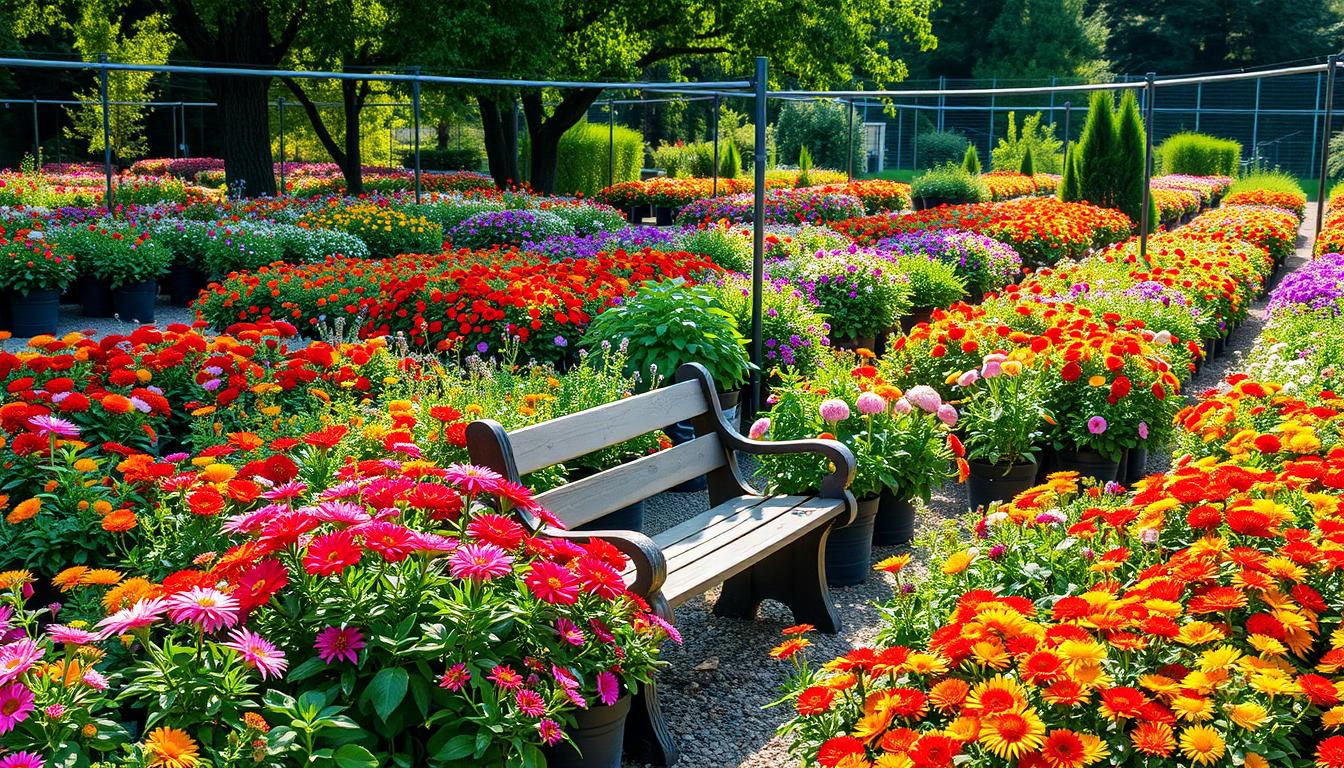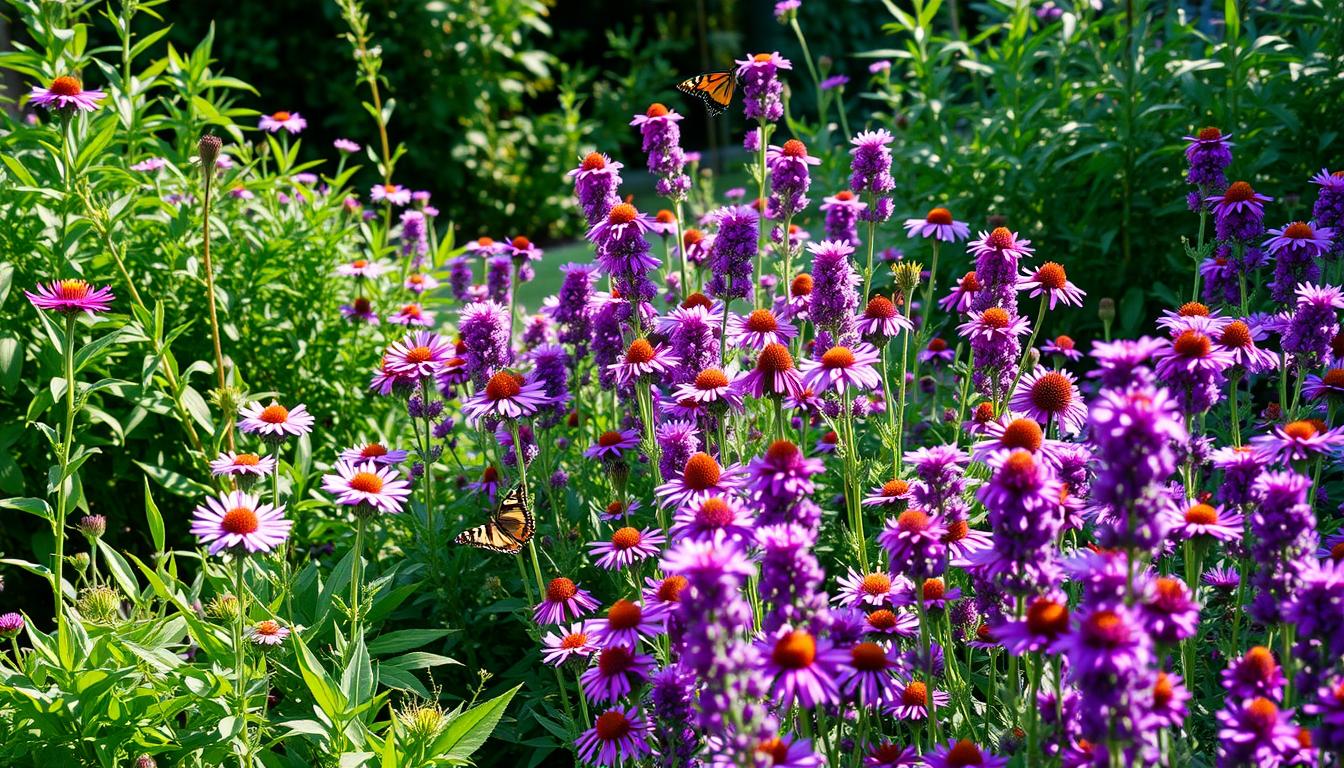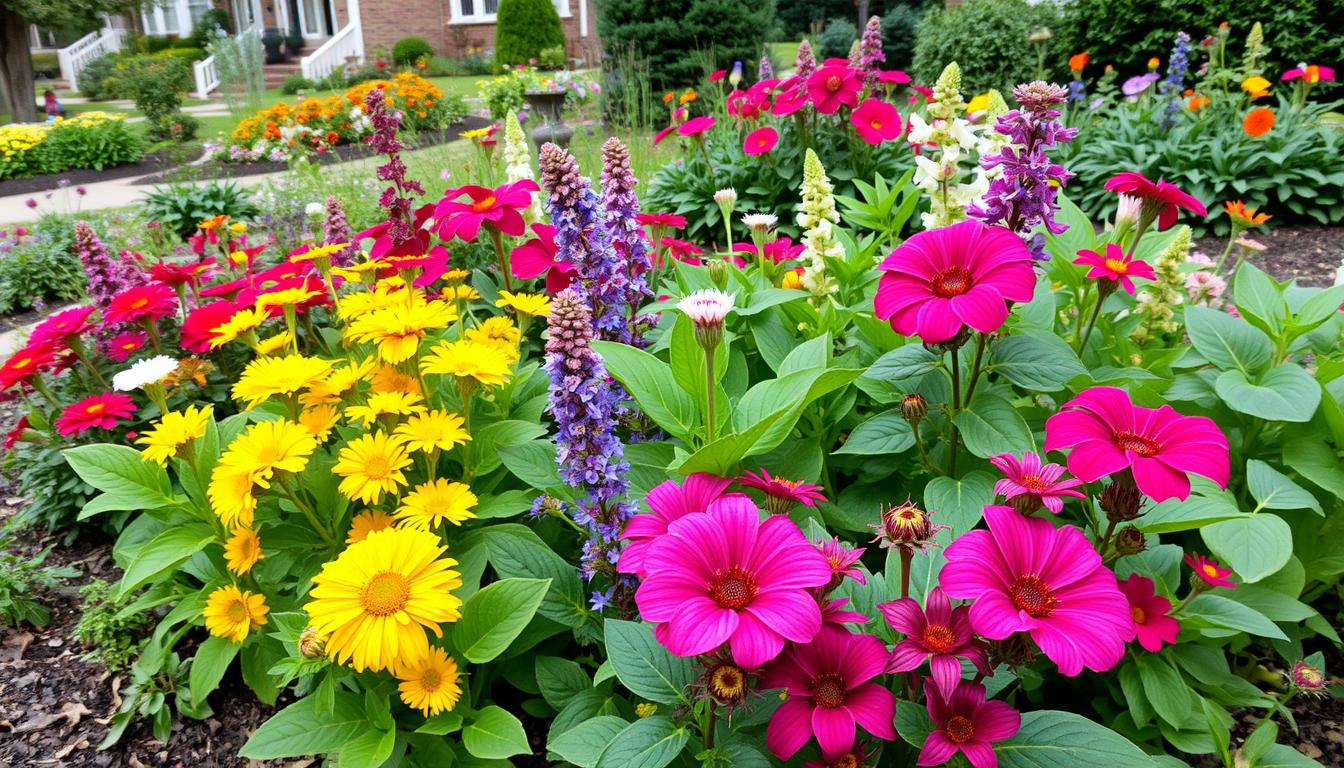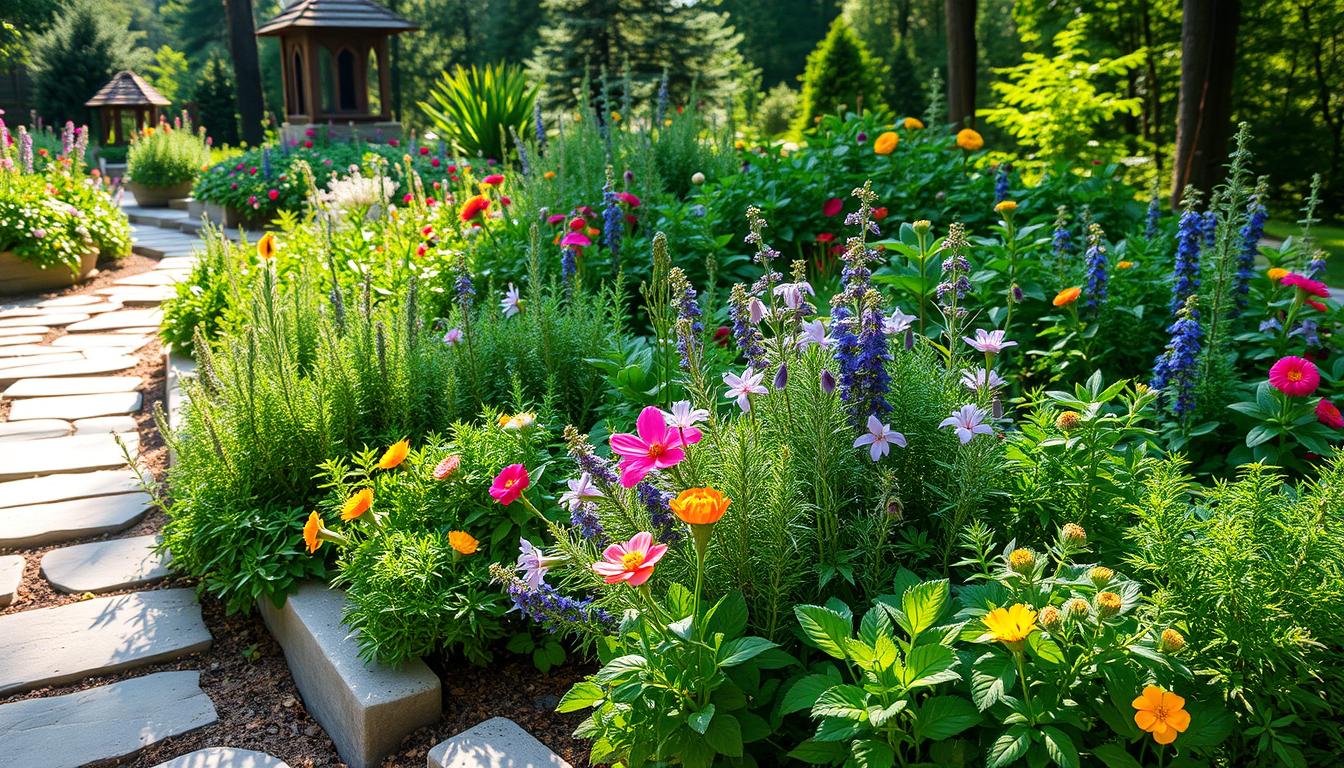Ever thought one plant could change your garden, kitchen, and health routine? The bushy perennial mint ore is about to change everything you know about flowering perennials.
Mint plants are known for their versatility. But the bushy perennial mint ore takes it to a new level. It’s not just about a nice smell; it’s a treasure of possibilities.
The mint ore’s incredible range of uses will amaze you. It’s a favorite in gardens, growing 18 to 36 inches tall and 12 to 24 inches wide.
It has a high essential oil yield, making it a botanical gem. It’s not just for gardens; it’s also used in food, drinks, and personal care.
Get ready to see how the bushy perennial mint ore can change your view on herbs, health, and gardening.
Table of Contents
What Is Bushy Perennial Mint Ore?
Exploring the world of hardy perennial herbs is fascinating. The bushy perennial mint ore is a standout plant. It has unique traits that attract gardeners and herb lovers.
Defining Characteristics
Aromatic mint varieties are more than just fragrant. This herb has some amazing features:
- Dense, bushy growth pattern
- Vibrant green leaves with intricate textures
- Compact root system
- Strong aromatic properties

Natural Habitat and Origins
The plant does well in certain conditions. Experts say it comes from areas with mild and good drainage.
| Characteristic | Details |
|---|---|
| Preferred Soil pH | 6.0 – 7.0 (Slightly Acidic to Neutral) |
| Ideal Growing Spacing | 12-18 inches between plants |
| Mature Height | 18-36 inches |
| Root System Depth | 12-18 inches |
“Nature’s most extraordinary herbs often hide in plain sight, waiting to be discovered and appreciated.” – Botanical Researcher
Learning about these hardy perennial herbs can change your gardening. Each plant has a story of survival and adaptation. They make any garden more interesting.
The Botanical Family of Mint Ore
Exploring the world of perennial garden plants is fascinating. Mint ore is a standout in the mint family, catching the eye of many. It’s a favorite among plant lovers and gardeners.
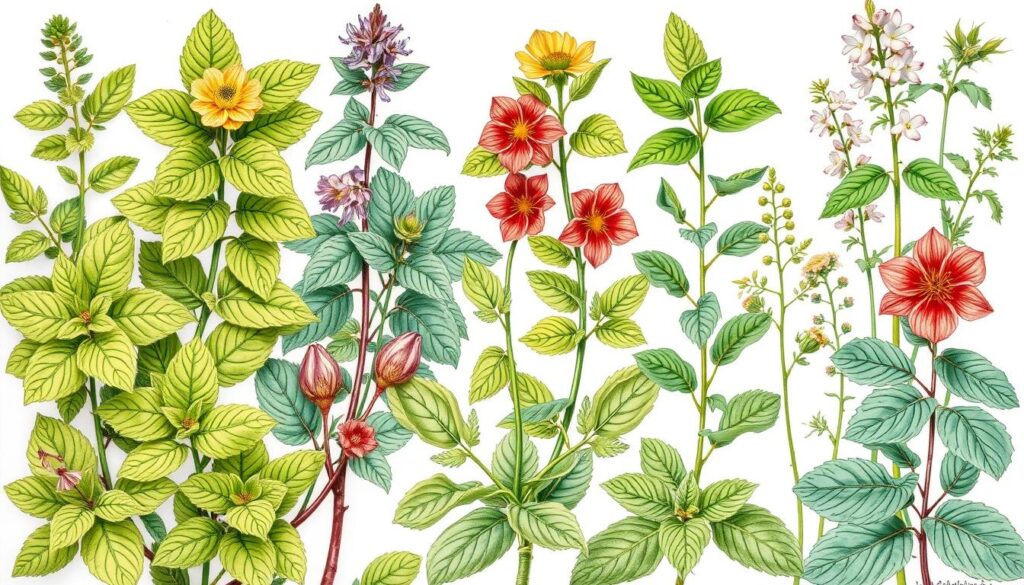
Learning about mint ore’s botanical classification is key. It shows its unique traits and ties to other mint plants. These herbs are known for their versatility and interest.
Identification and Classification
Mint ore is part of the Lamiaceae family. This group includes many aromatic herbs. Key features include:
- Square stems typical of mint
- Leaves grow in pairs
- They have special oils that smell great
- They grow in a neat way
Comparison to Other Mint Species
Looking at different mint plants shows their variety. Mint ore has its own special qualities:
| Characteristic | Mint Ore | Common Mint | Lemon Balm |
|---|---|---|---|
| Growth Pattern | Compact | Spreading | Upright |
| Leaf Aroma | Distinct herbal | Strong mint | Lemony |
| Cultivation Difficulty | Moderate | Easy | Simple |
“In the world of botanical wonders, mint ore represents a unique gem among perennial garden plants.” – Botanical Researcher
Understanding these differences helps us see mint ore’s special place. It’s a treasure in the mint family.
Cultivation of Bushy Perennial Mint Ore
Growing hardy perennial herbs like mint is rewarding for garden lovers. Mint cultivation tips help ensure a healthy plant. This adds beauty and flavor to your garden.
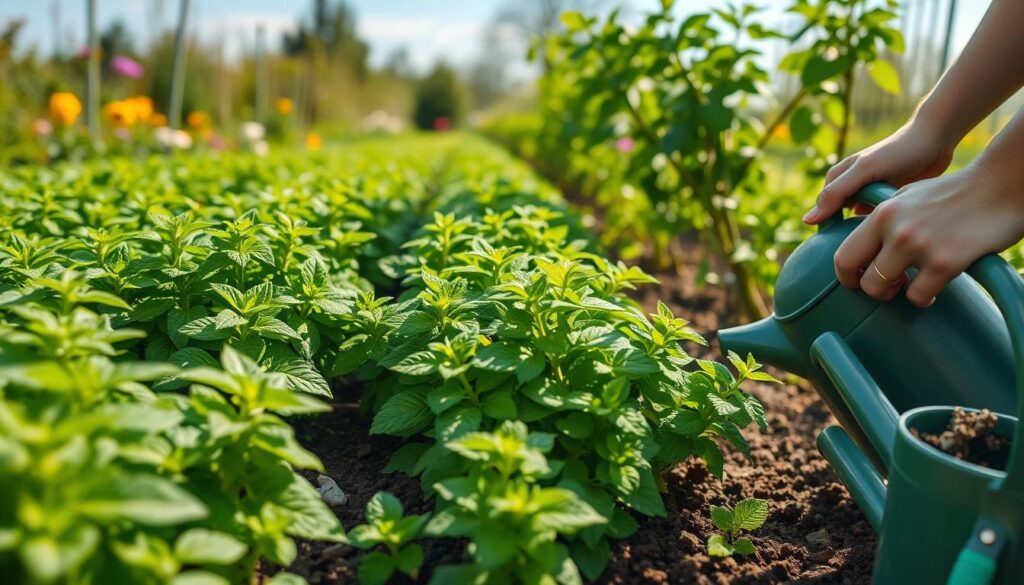
To grow mint well, you need to know its specific needs and best growing conditions. The right steps can make your garden lush and aromatic.
Ideal Growing Conditions
Mint grows best in certain conditions. Here are the key factors:
- Sunlight: Prefers full sun to partial shade
- Soil pH: 6.0-7.0 (slightly acidic to neutral)
- Spacing: Plant 12-18 inches apart
- Soil type: Well-draining, rich in organic matter
Propagation Techniques
Expanding your mint patch is easy with these methods:
- Stem cuttings: Place in water until roots develop
- Root division: Split mature plants in early spring
- Seed starting: Germination occurs in 7-14 days
“Mint is the ultimate garden survivor – with the right care, it’ll thrive almost anywhere!” – Garden Experts
Common Pests and Diseases
While mint is tough, it can still face challenges. Watch out for:
- Spider mites
- Aphids
- Root rot from overwatering
- Powdery mildew in humid conditions
Pro tip: Regular pruning and proper air circulation can prevent most mint-related growing issues.
Culinary Uses of Mint Ore
Mint plants add excitement to cooking for both home cooks and chefs. They bring vibrant flavors and depth to many dishes. This turns simple recipes into amazing meals.

Mint’s versatility opens up a world of flavors. It can make your cooking better, whether it’s savory or sweet.
Flavoring in Cooking
Mint’s unique taste can improve many dishes. You can use mint leaves in different ways:
- Salad dressings with fresh mint chiffonade
- Marinades for lamb and chicken
- Mediterranean and Middle Eastern dishes
- Vegetable stir-fries for a refreshing twist
Herbal Teas and Infusions
Mint tea is a classic way to enjoy these herbs. Making infusions is simple and relaxing. Try these blends:
- Mint and chamomile relaxation blend
- Moroccan-style mint green tea
- Peppermint and ginger digestive infusion
Mint Ore in Desserts
“Mint transforms desserts from ordinary to extraordinary!” – Culinary Expert
Dessert fans can play with mint in many ways. Try mint-chocolate mixes, fresh mint sorbets, or mint-garnished fruit salads. These can make your desserts unforgettable.
Learning about mint’s uses in cooking can make your kitchen more exciting. It adds fresh flavors to every meal.
Medicinal Benefits of Mint Ore
Mint ore is a hardy perennial herb known for its medicinal properties. It has caught the eye of both traditional healers and modern researchers. Let’s explore how this aromatic mint variety can heal.
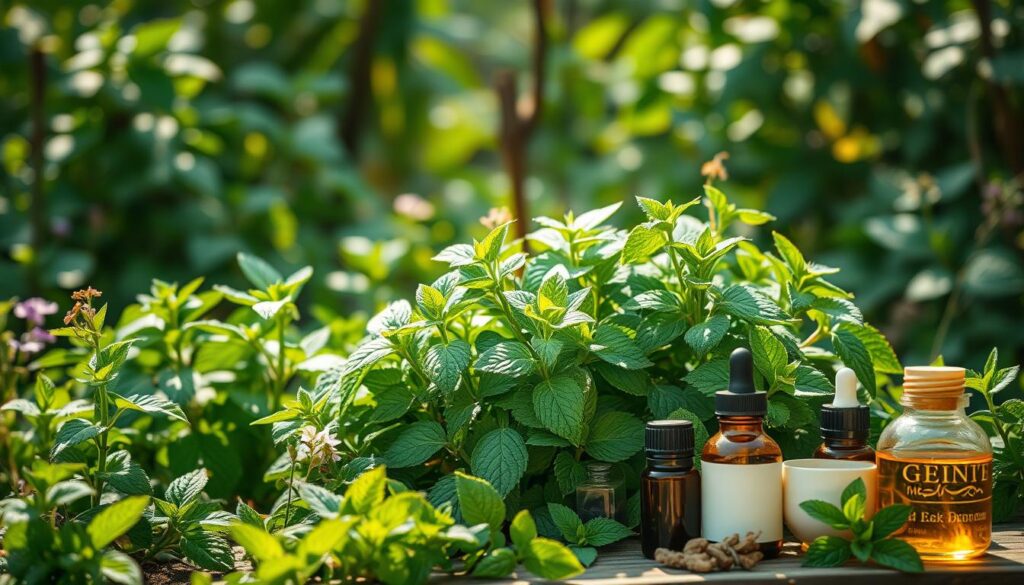
Traditional Herbal Remedies
Herbalists have used mint ore for generations. Traditional medicine practitioners have found it helpful for many health issues. These include:
- Digestive system support
- Respiratory tract relief
- Stress reduction
- Headache mitigation
Scientific Research Insights
Recent studies have backed up many of mint ore’s traditional uses. Scientists have found interesting properties. These make mint ore a topic of interest for medical experts.
| Health Benefit | Scientific Evidence |
|---|---|
| Digestive Health | Reduces inflammation and soothes intestinal muscles |
| Pain Management | Natural analgesic properties identified |
| Mental Clarity | Potential cognitive function enhancement |
Safety and Dosage Guidelines
Mint ore is beneficial, but knowing how to use it is key. Talking to healthcare professionals can guide you on safe amounts and interactions with medicines.
“Nature’s pharmacy often provides the most elegant solutions to complex health challenges.” – Herbal Medicine Expert
Keep in mind that everyone reacts differently. What works for one might not work for another. Always use herbal remedies with caution and advice from experts.
Aromatherapy with Mint Ore
Discover the power of mint in your wellness routine. Mint plants do more than just smell good. They help with mental and emotional health through aromatherapy.

Essential Oil Extraction Process
Getting essential oils from mint ore needs careful steps. Fresh mint leaves are harvested and steamed to get their strong scents. Growing your own herb garden helps get mint for oil making.
- Harvest mint leaves when oil is most concentrated
- Use steam distillation
- Get pure, strong essential oil
- Keep it in dark glass containers
Diffusers and Massage Applications
Mint essential oils are great for diffusers and massages. A few drops can change your space. It makes your home calm and fresh, helping your mind and body relax.
“Aromatherapy with mint ore is like a breath of fresh air for your mind and body.”
Mental Health Benefits
Mint plants do more than smell nice. Studies show mint oils can lower stress, boost focus, and balance emotions. Using it often can make your mind and body feel better.
- Reduces stress and anxiety
- Enhances mental clarity
- Supports emotional regulation
- Provides natural mood support
Crafting with Mint Ore
Explore the world of mint ore crafting. Here, plants from your garden turn into fun DIY projects. Let your creativity grow as you find new ways to use mint in home crafts.
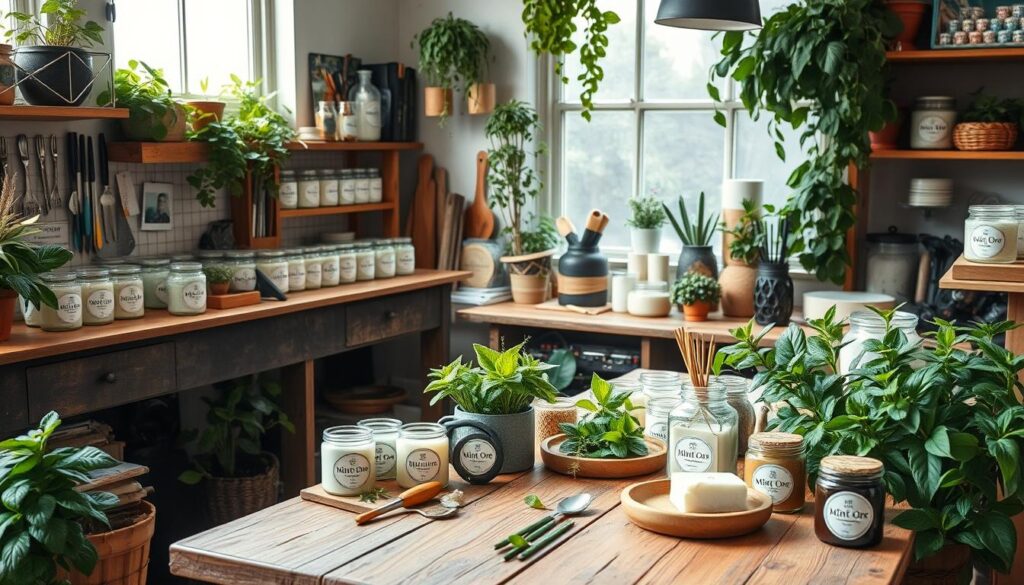
Mint crafting is a fun way to add your garden’s scent to your daily life. You can make fragrant accessories or skincare products. Mint ore is full of creative ideas for those who love making things.
DIY Herbal Sachets
Make herbal sachets to freshen up your space. You’ll need:
- Dried mint flowers
- Muslin or organza bags
- Lavender or complementary herbs
Use dried mint and perennial basil for a scent that keeps bugs away.
Potpourri and Home Fragrance
Turn mint flowers into potpourri for a fresh scent at home. Mix dried mint with other herbs for a unique fragrance.
| Ingredient | Purpose |
|---|---|
| Dried Mint Flowers | Primary Fragrance |
| Dried Lavender | Complementary Scent |
| Cedar Chips | Longevity Enhancer |
Infused Oils and Salves
Use mint to make healing oils and salves. Choose fresh mint leaves from your garden for the best results.
Learn how to craft with herbs from experts like gardening experts who know a lot about herbal crafts.
“Crafting with herbs connects us to nature’s healing power.” – Anonymous Herbalist
Environmental Impact of Mint Ore Cultivation
Growing mint ore in your garden does more than add beauty. It also helps local ecosystems and supports environmental sustainability.

Learning about mint ore’s environmental benefits can change how you garden. It shifts from just growing plants to supporting ecosystems.
Sustainability Practices
Mint ore is great for eco-friendly gardeners because it needs little care. It adapts well, which means:
- Less water use
- Less need for chemicals
- Natural defense against pests
Attracting Pollinators
Your mint ore patch becomes a lively spot for helpful insects. Bees, butterflies, and other pollinators love its flowers. This makes your garden a thriving ecosystem.
“A single mint plant can support dozens of pollinator species” – Environmental Gardening Institute
Soil Health Benefits
Mint ore is good for your soil. Its deep roots stop erosion and make the soil better. It also adds organic matter, boosting nutrients and helping microorganisms.
- Best soil pH: 6.0 to 7.0
- Root depth: 12-18 inches
- Nutrient boost: Rich in organic matter
Adding mint ore to your garden is more than growing a plant. It’s creating a sustainable, eco-friendly ecosystem.
Growing Mint Ore in Home Gardens
Growing mint ore can transform your home garden into a fragrant paradise. These hardy herbs thrive both indoors and outdoors, providing fresh, aromatic herbs year-round. Mint ore is easy to care for, making it a great addition to any garden.
Whether you have limited space indoors or a spacious outdoor garden, this versatile herb adds both beauty and utility, perfect for culinary and natural remedies.

To grow mint ore successfully, it’s essential to understand its growth habits and provide proper care. Mint ore thrives in well-drained soil and full sun. Regular watering is important, but avoid over-watering to prevent root rot.
Pruning the plant regularly encourages healthy growth. Understanding these needs will ensure your mint ore flourishes, providing you with a bountiful supply for culinary and medicinal uses.
Container Gardening Tips
Here are some tips for growing mint ore in containers:
- Choose containers with drainage holes to prevent root rot
- Select pots at least 12 inches wide to accommodate root spread
- Use high-quality potting soil rich in organic matter
- Place containers in areas receiving partial sunlight
Seasonal Care Recommendations
Here’s how to care for mint ore all year:
- Spring: Prune dead branches and refresh soil nutrients
- Summer: Water consistently and monitor for pest activity
- Fall: Reduce watering and prepare plants for winter dormancy
- Winter: Protect root systems with mulch in colder regions
“Successful gardening is about understanding your plants’ needs and creating an environment where they can thrive.” – Garden Wisdom
By following these tips, you’ll have a thriving mint ore garden all year.
Conclusion: Embracing Mint Ore in Daily Life
Exploring bushy perennial mint ore opens up a world of possibilities. It turns your garden into a lively and useful space. This herb is not just pretty; it also has many practical uses that can make your life better.
Mint ore’s uses are vast and exciting. It’s great for cooking and has health benefits too. Adding it to your garden, kitchen, and wellness routine can bring unique advantages.
Summary of Uses and Benefits
Mint ore is incredibly versatile. It grows well in many conditions, making it perfect for all gardeners. Its scent, health benefits, and cooking uses make it a standout in gardens.
Encouraging Sustainable Practices
Using mint ore is more than just fun. It helps the environment, supports local nature, and connects you to gardening. Let mint ore change your garden and daily life for the better.




